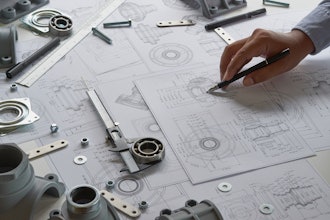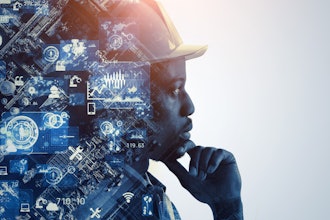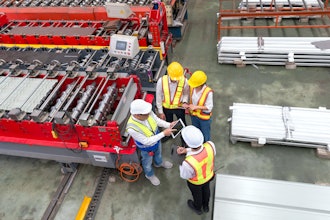Labor shortages in the manufacturing industry make it hard enough for companies to find their next hire, let alone build up a pipeline of skilled candidates for the future. It’s important to look beyond your immediate staffing needs to thrive in the long term, but that’s easier said than done when you’re lacking skilled laborers to meet your business needs today.
Almost 75 percent of manufacturers say the skills gap has hindered their company’s ability to expand, and nearly 70 percent expect the shortage to worsen. Hiring managers are desperate to fill immediate open positions, but that doesn’t mean you can’t also focus on your company’s future. Here are a few ways your manufacturing company can start building a strong talent pipeline to ensure a robust workforce moving forward.
Provide Diverse Training Programs
The existing skills gap in manufacturing means companies can’t count on finding workers who already have the skills they require — they need to actively support workers in developing those skills.
Colleges and trade programs can’t always adapt quickly enough to meet the needs of employers in these fast-advancing industries. Sometimes, if you want something done right, you’ve got to do it yourself. Consider offering the following skill-building opportunities through your own company:
- Provide your workers with training on the latest equipment and digital tools. This can take many forms, such as digital microlearning for frontline employees as well as classroom and field-based training. It’s important to make training regular and ongoing, rather than intermittent, in order to keep workers up to date on key skills. Management should view continuous learning as one of the necessities of the job, like anything else that happens on the factory floor.
- Run apprenticeship programs to foster future talent. Reach out to your local colleges, technical schools, high schools, and professional bodies to collaborate. Together, you can design and implement student apprenticeship programs, internships, co-op placements, and other practical opportunities for students to get real-world experience — and for your company to get an early foot in the door with soon-to-be graduates. By working directly with these institutions, you can influence what skills students learn as part of their education and shape them for future work.
By training existing staff and preparing potential workers, you ensure that your workforce will have the skills you need from them. This not only helps close the skills gap at your company, but also lays the groundwork for your talent pipeline.
Predict and Manage Talent Shortages
What skills or positions will you need to replace at your company in five or ten years? To plan for the long term, you have to know which employees are most likely to retire or leave the workforce and which are most likely to stay on the team.
You don’t need to rely on guesswork for this. Utilize your own company data to accurately predict turnover and skills shortages. One company featured in a recent LinkedIn study had a few hypotheses on the cause of their talent shortage. They compiled five years of worker data so they could test their ideas, and identified a number of highly-correlated factors. By carrying out this thorough statistical analysis, the company was able to understand why they were losing key employees and what they needed to do in order to better manage their talent.
Statistical modeling is an effective way to anticipate your company’s future talent needs and can help create a strong talent pipeline — you just have to make the most of your existing data. Adding analytics technology or functionality to your HR department can provide intelligence on the talent situation at your unique business and facilitate ongoing planning.
Sell Your Industry
Training and data aren’t enough to attract talent to your pipeline. The manufacturing industry also has an image problem that requires a marketing makeover.
As employees reach retirement age, there are few young people ready to take their place, in part because of how the industry is perceived. Manufacturing is often seen as an unpleasant and dangerous field. People often don’t understand that many of the tools and processes of the past have been replaced with exciting technology like augmented reality, drones, and mobile software. It’s up to your organization to show younger generations what your industry is really like.
Positioning manufacturing as an interesting, high-tech industry in need of bright, analytical workers can go a long way in changing perceptions. That’s the rationale behind Minnesota’s Annual Manufacturers Week, an event that encourages manufacturers to host free plant tours. Talent-securing initiatives like Manufacturers Week and the Minnesota Jobs Skills Partnership are among the reasons why Minnesota is known nationwide for its manufacturing excellence.
Beyond giving tours of your facilities, reach out to your school district to educate children. Send guest speakers to classrooms and sponsor school sports teams. By talking to students as early as middle-school age, you can help them grow up with a greater awareness of the fantastic opportunities in your industry — and even at your company specifically.
Encourage Employees to Help You Recruit
Your HR team isn’t the only recruitment staff you have. Some of your best recruiters may be employees working on the plant floor.
Encouraging your employees to recruit other employees saves on recruitment costs and often elevates the quality of your hires. That’s because your employees will only refer the people they would want to work with everyday — in other words, good workers, team players, and great culture fits.
Ask your employees if they know anyone who might be a top candidate for your next open position. You can also consider implementing a bonus or incentive system for successful referrals to motivate your employees to start bringing in talent.
There’s no one fix to the long-term talent shortage facing manufacturing companies. A strong talent pipeline requires a multifaceted approach. By investing time and resources in both your current and future employees, you can overcome current labor challenges and set your company up for ongoing success with a skilled workforce.
Chris Lennon is Vice President of Product Management at BirdDogHR.























